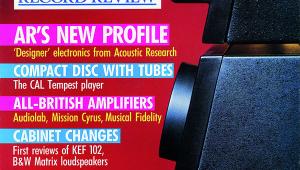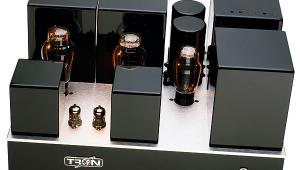Reel-To-Reel Recorders Page 2
Meanwhile, two headphone sockets are provided, with adequate levels to drive high impedance 'orthodynamic' types as well as the more sensitive moving-coil varieties. A headphone volume control (monitor level) is present, although the line outputs are semi-fixed (preset controls can be found on the rear panel). Finally, the level meters sensibly indicate the modulation depth going onto or coming off the tape, and are not affected by replay level adjustment.
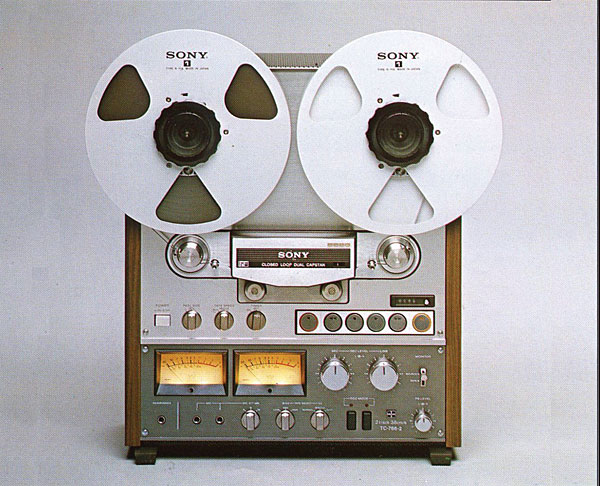
Sony TC766-2
A substantial machine of excellent finish and with a 'solid' feel, the TC766-2 employs the company's established dual-capstan tape transport which isolates the section of tape passing over the heads from most reel tension irregularities. The tape path itself is complex, with damped tension arms, rollers and fixed guides, and some practice is required for quick threading. The latter is also impaired to some degree by the high static back-tension. The two capstans have individual flywheels, both belt-driven from one AC-powered servo-controlled motor using a tacho generator. The feed spool motor is also servo-controlled to maintain optimum back-tension.
One further change is that the latching transport switches on earlier Sony models have here been replaced by illuminated touch buttons, with full logic control, and a minimum of relays, with AC motor switching, etc, now being accomplished by way of bridge-linked transistor controls.
Sony's own ferrite magnetic heads are used on the TC766-2, these carrying the 'Symphase' label which indicates that special attention has been paid to phase balance at high frequencies between tracks. This is vital to matrixed programmes but also important in stereo. The low wear rate of these heads means that theoretically they could last out the life of the machine.
One final point is that with a large in-house tape manufacturing plant in Japan as well as the USA, it is perhaps not surprising that the TC766-2 is compatible with Sony's latest open-reel tape FeCr or 'Dual', and while this has yet to be fully investigated, it would appear to offer extended dynamic range not to mention low distortion.
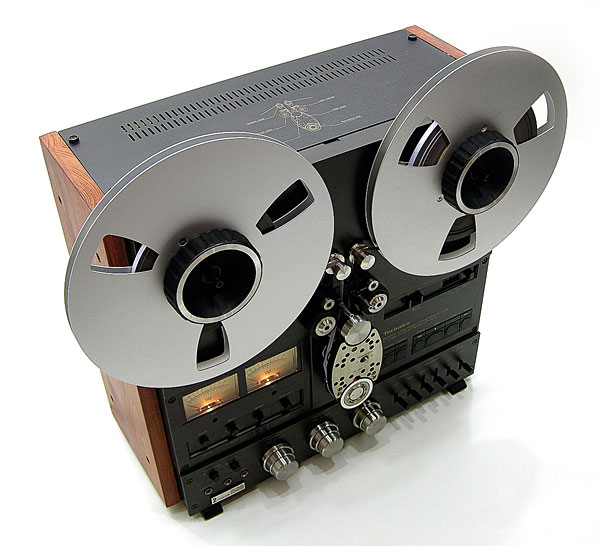
Technics RS-1500 US
This award-winning recorder demonstrates Technics' expertise in the field of direct-drive motors. In fact, the transport is reminiscent of an established '3M' professional deck, with a looped 'U' tape path over the heads isolated from the feed and take-up reels by a large capstan as well as a dual pinch-wheel system. The motors of course differ, the Technics capstan being a quartz frequency controlled unit with a massive integral flywheel. This is the tape deck equivalent of the SP10 Mk II motor used in the turntable of the same name.
The precise speed control plus minimal tape slip allows this deck to be fitted with an elapsed-time-indicator scaled in minutes and seconds – a marked improvement over the arbitrarily scaled tape position counters usually employed. In addition, a variable pitch option is included on the front panel.
The Technics RS-1500 US is also equipped for direct DC operation from an external 24V supply – for example, two car batteries or a 24V NiCad pack – although some limitation on excessive fast winding is apparent in this mode, and the panel lamps are also disconnected to conserve energy.
As with the Sony deck, the reel motors are servo-controlled, and in addition the RS-1500 US roller bearing tension arms are air-piston damped. In consequence, the deck attains a stable operating speed in under one second from start-up. The closed tape-loop also allows a relatively low tension value (80g), which minimises scrape flutter (mechanical modulation noise) at the same time serving to maintain excellent tape/head contact.
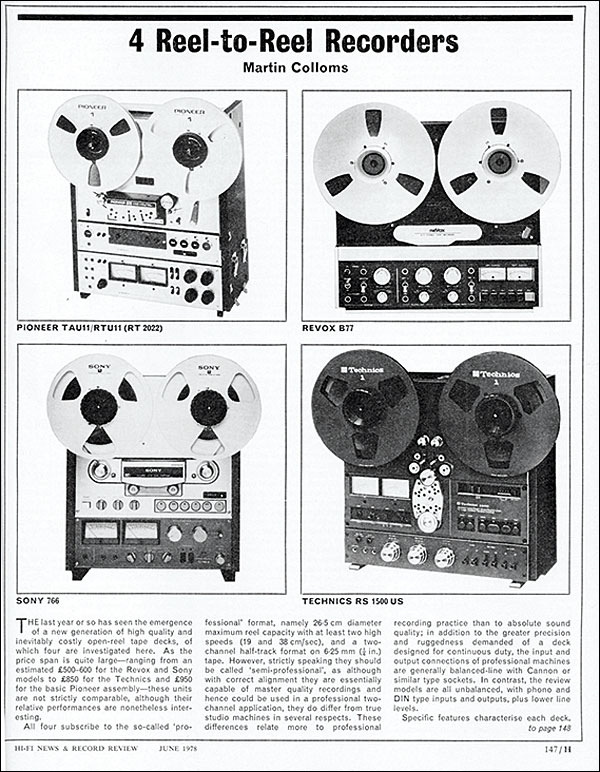
Conclusion
All four machines in this group performed very well so the decision to purchase must be based on a dual consideration of price, plus facilities offered. At approximately £500, the Sony TC766-2 is undoubtedly good value. The points to note are fine performance at both speeds, facilities for FeCr tape plus NAB equalisation. The deck was also accurately calibrated in all respects and showed minimal response irregularities at low frequencies. However, some mechanical noise was apparent.
At a higher price (£600) the Revox B77 represents equally good value, with excellent responses, particularly at low frequencies. It is also comparatively quiet. With IEC equalisation it offers the best dynamic range at 38cm/sec, and the peak modulation indicators are useful. Build quality is high, with excellent accessibility for servicing.
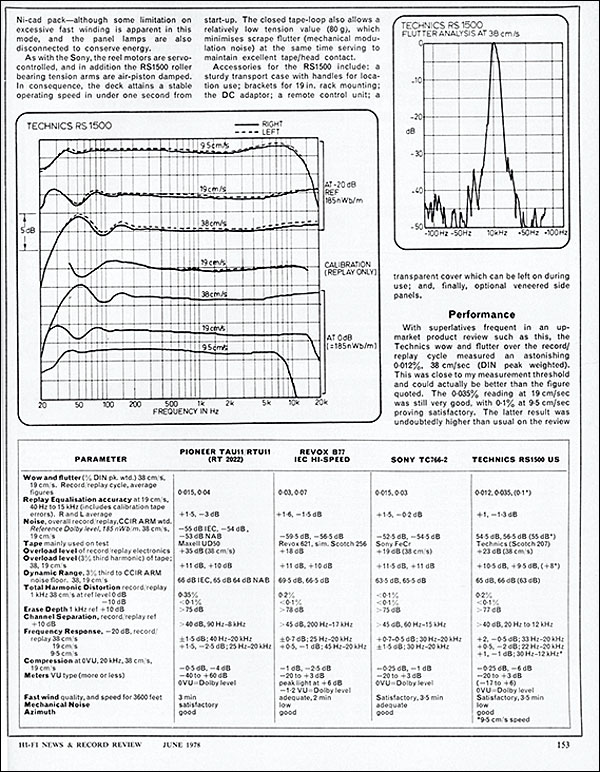
The Technics RS-1500 US sells for around £850. As well as its excellent all-round performance, its outstanding transport offers a superlative tape-head contact and gentle tape handling. A 9.5cm/sec speed is included for less demanding applications, and ¼-track replay is also part of the package. NAB equalisation and a Varispeed capstan are standard, as is the quartz lock which makes a genuine elapsed-time tape meter possible, and the option for DC operation is also unique here.
In two-channel form, the Pioneer RT2022 costs £900, with an extra £250 bringing you the second four-channel head-block along with the additional record amplifier control unit. As a system it has no contemporary parallel and would suit a serious amateur music enthusiast, while the RTU11 on its own (which costs around £800) could be used alone as a replay/calibration transport with IEC and NAB equalisation available at 38cm/sec.
In addition to the system's sheer versatility and fine overall performance, special features include its in-built calibration oscillators, wide-range metering and a rugged but straightforward mechanical construction. Used exhaustively for a number of recent large group tests as a master tape replay source, this deck has proved dependable. At around £1150 in four-channel form, and taking into account all the facilities offered, the value is good.








